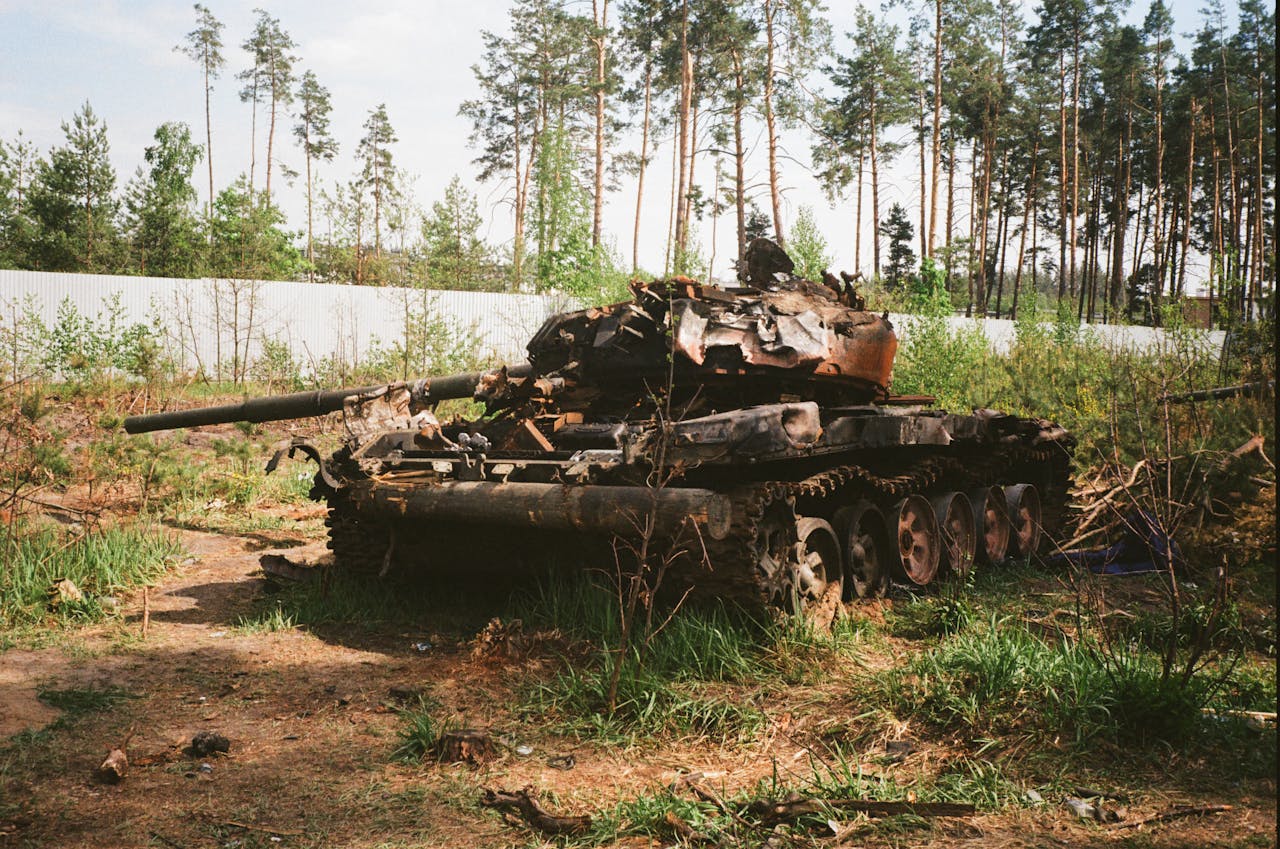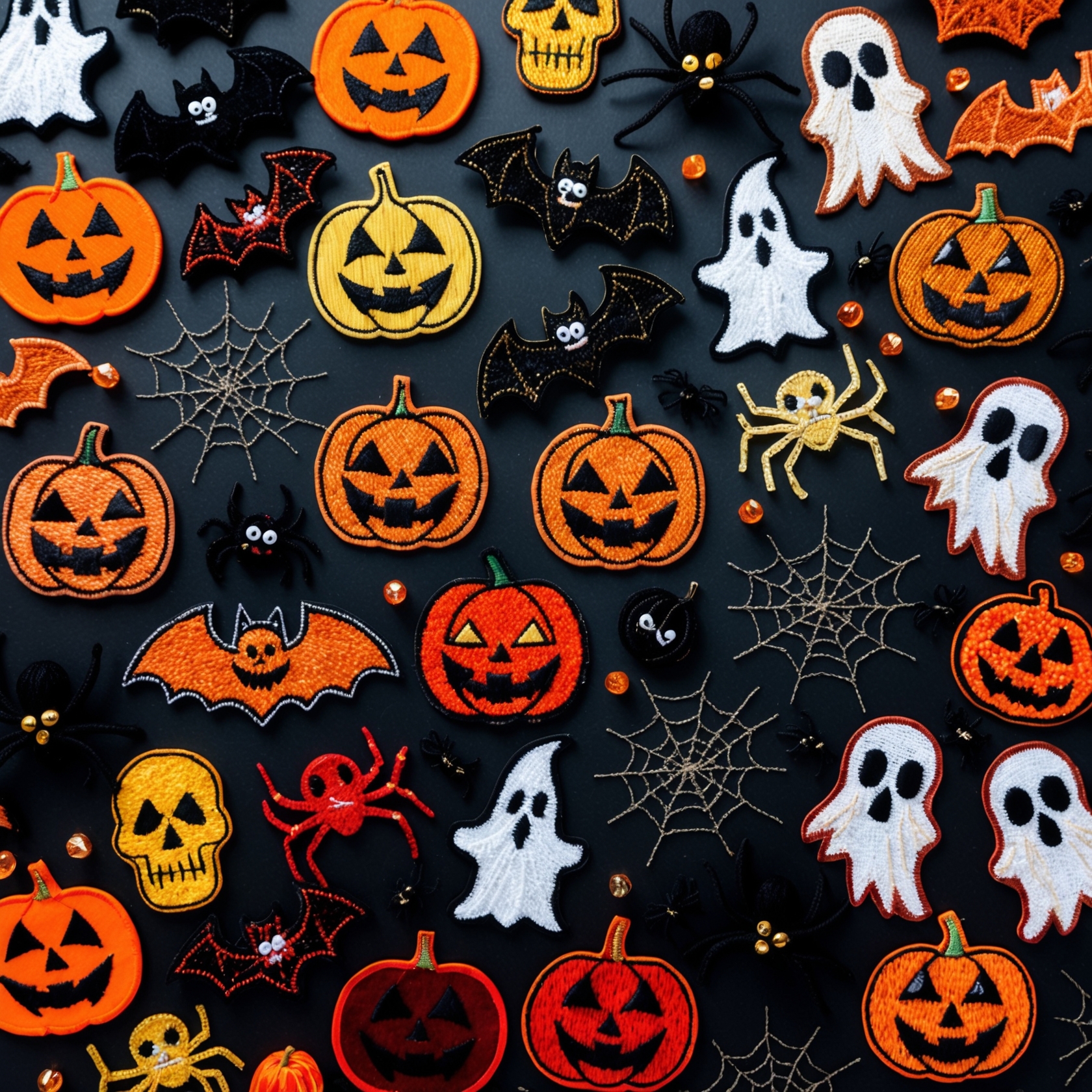Patches have long been a symbol of military identity, representing the rich history, achievements, and values of armed forces around the world. These small, often intricately designed pieces of fabric carry profound significance, serving as markers of unit identity, commemorative milestones, and symbols of pride and honor. Tracing the evolution of military patches offers a unique lens through which to explore military history. From the early emblems of ancient armies to the modern insignias of today’s armed forces, each patch tells a story of tradition, bravery, and camaraderie. This article delves into the fascinating world of military patches, examining their historical significance, iconic designs, and the stories they represent.
Military history is often told through battles, leaders, and strategies, but another compelling narrative exists in the form of military patches. These embroidered symbols, worn proudly on uniforms, encapsulate the essence of military units and the missions they undertake. Beyond their decorative appeal, patches serve as a visual record of a unit’s history, achievements, and values, offering a tangible connection to the past.
Patches have been used by militaries for centuries, evolving from simple identifiers to complex designs rich with symbolism. Each patch reflects the unique characteristics of the unit it represents, from the specialized skills of elite forces to the geographic region of a brigade. As collectibles, military patches offer historians, veterans, and enthusiasts a way to connect with military heritage and honor the sacrifices of those who served.
In this article, we will explore the history of military patches, highlighting iconic designs and their significance in the broader context of military history. We will trace the evolution of patches from ancient times to the present day, examining how they have been used to foster unity, commemorate achievements, and convey important messages. By delving into the world of military patches, we aim to shed light on an often-overlooked aspect of military history and the rich stories these symbols carry.
1. The Origins and Evolution of Military Patches
The use of symbols and insignia to identify military units can be traced back to ancient civilizations. However, the modern concept of embroidered military patches has its roots in more recent history. Understanding the origins and evolution of these patches provides insight into their role and significance in military culture.
Ancient and Medieval Insignia
In ancient times, armies often used symbols and colors to distinguish themselves from their enemies. Roman legions, for example, carried standards adorned with emblems such as the eagle, representing the power and authority of Rome. Similarly, medieval knights displayed coats of arms on their shields and surcoats, which identified their allegiance and family heritage.
These early forms of insignia were not patches as we know them today, but they served a similar purpose: to identify and symbolize military units. The use of these symbols helped foster a sense of identity and unity among soldiers, while also instilling pride and loyalty.
The Birth of Modern Military Patches
The modern era of military patches began in the early 20th century, coinciding with the industrialization of textile production and the formalization of military uniforms. During World War I, military patches became more common, particularly among Allied forces. These patches were used to identify different units, such as divisions, brigades, and battalions.
One of the earliest examples of a modern military patch is the British Expeditionary Force’s “Red Chevron,” worn by soldiers who had served in France. In the United States, the 81st Division’s “Wildcat” patch is considered one of the first officially recognized division patches. These early patches were simple in design, often featuring a single symbol or letter to represent the unit.
As military organizations became more complex, so did the design of patches. By World War II, the use of patches had expanded significantly, with each division, corps, and specialized unit sporting its own unique insignia. These patches often featured intricate designs, incorporating symbols, colors, and text that conveyed the unit’s identity and mission.
The Evolution of Patch Design
Over the decades, military patch design has continued to evolve, reflecting changes in military structure, technology, and culture. Modern patches are often more detailed and colorful, utilizing advanced embroidery techniques and materials. They can include a wide range of elements, from traditional symbols like shields and eagles to more contemporary imagery.
Specialized units, such as airborne divisions, special forces, and medical corps, often have distinctive patches that reflect their unique roles. For example, the U.S. Army’s 101st Airborne Division is known for its “Screaming Eagle” patch, symbolizing the unit’s airborne capabilities and fierce combat spirit. Similarly, the U.S. Navy SEALs use the trident symbol, representing their expertise in sea, air, and land operations.
In addition to unit patches, militaries also issue patches to commemorate specific missions, deployments, and achievements. These commemorative patches often include mission names, dates, and imagery relevant to the operation. For example, NASA’s mission patches for spaceflights feature detailed designs that reflect the mission’s objectives and the crew’s contributions.
2. Iconic Military Patch Designs and Their Significance
Military patches are rich in symbolism, with each design element carrying specific meaning. Iconic military patches often become symbols of bravery, excellence, and heritage. In this section, we will explore some of the most iconic military patch designs and their significance.
The 101st Airborne Division “Screaming Eagle” Patch
One of the most recognizable military patches is the “Screaming Eagle” of the U.S. Army’s 101st Airborne Division. The patch features a bald eagle’s head, a symbol of courage and freedom, set against a black shield. The eagle is depicted with an open beak, as if screaming, symbolizing the division’s fierce combat readiness.
The 101st Airborne Division played a pivotal role in several key operations during World War II, including the D-Day landings and the Battle of the Bulge. The “Screaming Eagle” patch became synonymous with the division’s bravery and effectiveness in airborne operations. Today, the patch continues to symbolize the division’s elite status and its proud history.
The “Big Red One” of the 1st Infantry Division
The “Big Red One” patch of the U.S. Army’s 1st Infantry Division is another iconic design. The patch is simple yet striking, featuring a large red numeral “1” on a green shield. The design symbolizes the division’s distinction as the first regular Army division to be organized in the United States.
The 1st Infantry Division has a storied history, with service in both World Wars, Vietnam, and more recent conflicts in the Middle East. The “Big Red One” patch is a symbol of the division’s long-standing tradition of excellence and its role in key military engagements. The patch’s simplicity and boldness make it easily recognizable and respected.
The “Trident” of the U.S. Navy SEALs
The trident symbol used by the U.S. Navy SEALs is a powerful emblem representing the unit’s capabilities in sea, air, and land operations. The patch features a trident, anchor, and eagle—symbols of maritime prowess, naval tradition, and military strength. The trident represents the SEALs’ mastery of underwater and amphibious warfare, while the anchor symbolizes their connection to the Navy.
The U.S. Navy SEALs are known for their rigorous training and versatility in special operations. The trident patch is not only a mark of membership in this elite unit but also a symbol of the SEALs’ commitment to their mission and their readiness to operate in any environment. It is a badge of honor earned through intense training and exceptional skill.
The “Winged Arrow” of the British Special Air Service (SAS)
The British Special Air Service (SAS) is one of the most renowned special forces units in the world. The SAS’s emblem, known as the “Winged Dagger” or “Winged Arrow,” features a dagger with wings, set against a blue background. The dagger represents the unit’s precision and lethality, while the wings symbolize speed and mobility.
The SAS’s motto, “Who Dares Wins,” is often included in the patch design, reflecting the unit’s daring and audacious approach to special operations. The “Winged Dagger” patch is a symbol of the SAS’s elite status and its history of conducting high-risk, high-impact missions.
The “Thunderbird” of the U.S. Air Force’s 45th Space Wing
The 45th Space Wing of the U.S. Air Force, responsible for managing launch operations at Cape Canaveral, uses the Thunderbird as its emblem. The patch features a stylized Thunderbird, an important symbol in Native American mythology, representing power, protection, and the ability to control the elements.
The Thunderbird symbolizes the 45th Space Wing’s role in space operations and its commitment to ensuring the success of critical space missions. The patch reflects the unit’s unique mission within the Air Force and its contributions to the advancement of space exploration and technology.
The “Black Sheep” of Marine Fighter Squadron 214 (VMF-214)
Marine Fighter Squadron 214, also known as the “Black Sheep,” gained fame during World War II under the leadership of Major Gregory “Pappy” Boyington. The squadron’s emblem features a black sheep, symbolizing its members’ reputation as unconventional and daring pilots.
The “Black Sheep” patch became a symbol of the squadron’s fighting spirit and success in aerial combat. The squadron’s exploits and distinctive patch were popularized in the television series “Baa Baa Black Sheep.” Today, the patch continues to represent the squadron’s legacy and its tradition of excellence in Marine Corps aviation.
3. The Role of Military Patches in Fostering Unit Identity and Morale
Military patches play a crucial role in fostering unit identity and morale. They are more than just decorative items; they are symbols of belonging, pride, and shared experience. This section explores how military patches contribute to the cohesion and spirit of military units.
Symbol of Belonging and Pride
For many service members, wearing a unit patch is a source of pride. It signifies their membership in a specific unit and their contribution to its mission. The patch serves as a visual representation of the unit’s identity, history, and values. For example, wearing the “Screaming Eagle” patch signifies membership in the 101st Airborne Division, known for its storied history and elite status.
Patches also foster a sense of belonging among unit members. They serve as a unifying symbol, reminding service members that they are part of a larger team with a shared purpose. This sense of belonging is particularly important in military settings, where cohesion and teamwork are essential for success. Wearing the same patch creates a bond among service members, reinforcing their commitment to each other and to their mission.
Boosting Morale and Esprit de Corps
Military patches contribute to morale and esprit de corps, the spirit of camaraderie and loyalty within a unit. Patches often commemorate significant achievements, such as successful missions or deployments. Receiving a patch for a specific accomplishment can be a source of pride and motivation for service members, recognizing their hard work and dedication.
For example, patches awarded for combat deployments, such as those for Operation Desert Storm or Operation Enduring Freedom, honor the service and sacrifices of those who participated. These patches become a part of the service members’ personal history, reminding them of their experiences and the bonds formed with their comrades.
In addition to commemorating achievements, patches also celebrate the unique culture and traditions of a unit. Many units have distinctive symbols, mottos, or mascots that are featured on their patches. These elements reflect the unit’s character and ethos, creating a sense of identity and pride among its members.
Promoting Discipline and Professionalism
The design and presentation of military patches also promote discipline and professionalism. Patches are often worn on uniforms according to specific regulations and standards. Adhering to these standards demonstrates attention to detail and respect for the unit’s traditions.
For example, in the U.S. military, the placement and appearance of patches are governed by uniform regulations. Service members must ensure that their patches are correctly positioned, clean, and in good condition. This attention to uniform standards promotes a sense of discipline and professionalism, reinforcing the importance of appearance and conduct.
Patches can also serve as a form of recognition for exceptional performance. Units may issue special patches or tabs for specific qualifications or accomplishments, such as completing Ranger School or earning the Expert Infantryman Badge. These patches signify a high level of skill and professionalism, setting the wearer apart and inspiring others to strive for excellence.
Building a Legacy and Preserving History
Military patches are an important part of a unit’s legacy and history. They serve as a record of the unit’s achievements and the service members who contributed to them. As such, patches are often collected, preserved, and displayed in museums, archives, and personal collections.
For example, the National Museum of the United States Air Force and the Imperial War Museum in London have extensive collections of military patches, representing units from different eras and conflicts. These collections provide valuable insights into the history and evolution of military units, as well as the experiences of the service members who wore the patches.
Patches also play a role in honoring the memory of fallen service members. Units may create commemorative patches to remember those who have made the ultimate sacrifice. These patches serve as a tribute to the courage and dedication of the fallen, ensuring that their memory lives on.
4. Collecting Military Patches: A Journey Through Military History
Collecting military patches is a popular and rewarding hobby that offers a unique way to explore and connect with military history. Whether collected for their aesthetic appeal, historical significance, or personal connection, military patches provide a tangible link to the past.
The Appeal of Military Patch Collecting
The appeal of collecting military patches lies in the rich history and diverse designs they represent. Each patch tells a story, reflecting the unique characteristics and achievements of the unit it represents. Collectors are often drawn to specific themes, such as patches from a particular conflict, branch of service, or type of unit.
For example, some collectors focus on patches from World War II, seeking out patches from various divisions, air squadrons, and naval units. Others may specialize in collecting patches from elite units, such as special forces or paratroopers. The diversity of military patches ensures that there is something for every collector, whether they are interested in the history of a specific country, period, or military branch.
Sourcing and Authenticating Patches
Sourcing and authenticating military patches is an important aspect of the hobby. Collectors can find patches through various channels, including military surplus stores, online marketplaces, memorabilia shows, and auctions. However, it is crucial to verify the authenticity of patches, as reproductions and counterfeits are common.
To authenticate a patch, collectors often rely on knowledge of the materials, stitching techniques, and design elements used during specific periods. Reference books, online forums, and expert collectors can provide valuable information and guidance. Understanding the provenance and history of a patch can also add to its value and significance.
Preserving and Displaying a Collection
Preserving and displaying a collection is an important part of military patch collecting. Proper storage is essential to protect patches from environmental damage, such as moisture, light, and temperature fluctuations. Collectors should use acid-free materials, such as albums, sleeves, or display cases, to store their patches.
Displaying a collection allows collectors to showcase their patches and share their passion for military history. Options include framing patches, creating shadow boxes, or using display cases. When displaying patches, it is important to consider factors such as lighting, humidity, and temperature to ensure the preservation of the patches.
The Community of Military Patch Collectors
The community of military patch collectors is vibrant and diverse, offering opportunities for learning, trading, and socializing. Collectors often join organizations, forums, and social media groups to connect with others who share their interests. These platforms provide valuable resources, including information on patch history, authentication tips, and upcoming events.
Participating in the collector community can enhance the collecting experience, providing opportunities to acquire rare patches, learn about military history, and share stories with fellow enthusiasts. Collectors often develop a deep appreciation for the history and heritage represented by their patches, making the hobby both educational and rewarding.
Conclusion
Military patches are more than just decorative items; they are symbols of military history, identity, and achievement. From the ancient emblems of Roman legions to the modern insignias of elite special forces, patches have played a crucial role in military culture. They serve as markers of unit identity, commemorative milestones, and symbols of pride and honor.
Exploring the world of military patches offers a unique perspective on military history. Each patch tells a story, reflecting the unique characteristics and achievements of the unit it represents. Iconic designs, such as the “Screaming Eagle” of the 101st Airborne Division and the “Big Red One” of the 1st Infantry Division, have become symbols of bravery, excellence, and heritage.
For collectors, military patches offer a tangible connection to the past, providing a way to explore and preserve the rich history of military units. The hobby of collecting military patches is both educational and rewarding, offering opportunities to connect with fellow enthusiasts and deepen one’s understanding of military history.
As we continue to honor the service and sacrifices of military personnel, military patches remain a powerful symbol of the bravery, dedication, and camaraderie that define the armed forces. They are a lasting tribute to the men and women who have served and continue to serve, preserving their legacy for future generations.
If you are interested in ordering some high-quality custom patches, feel free to call us at 877-912-6407 or fill out a FREE quote here.




